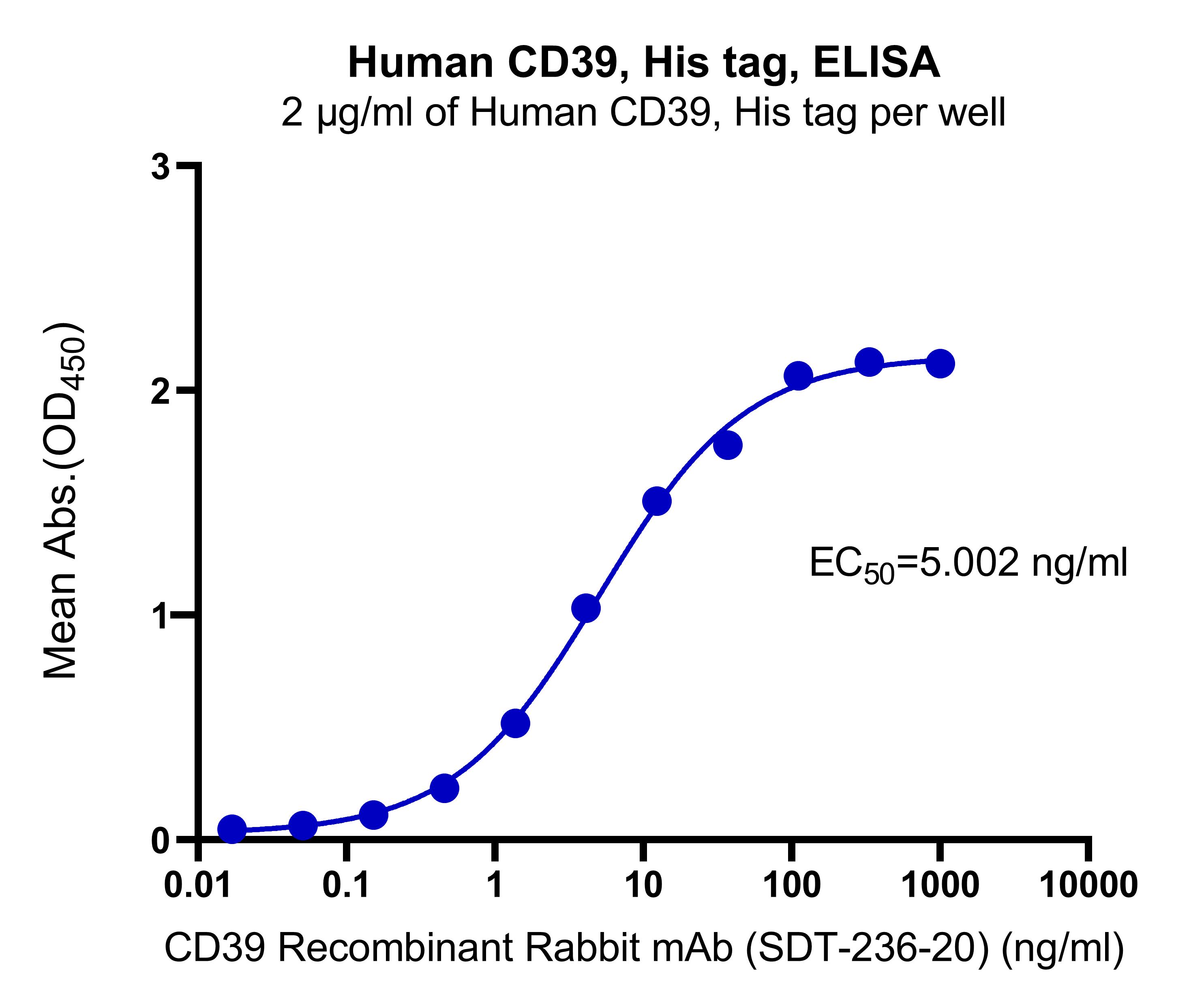Protein sequence (P49961, Lys41-His474, with C-10*His) KALPENVKYGIVLDAGSSHTSLYIYKWPAEKENDTGVVHQVEECRVKGPGISKFVQKVNEIGIYLTDCMERAREVIPRSQHQETPVYLGATAGMRLLRMESEELADRVLDVVERSLSNYPFDFQGARIITGQEEGAYGWITINYLLGKFSQKTRWFSIVPYETNNQETFGALDLGGASTQVTFVPQNQTIESPDNALQFRLYGKDYNVYTHSFLCYGKDQALWQKLAKDIQVASNEILRDPCFHPGYKKVVNVSDLYKTPCTKRFEMTLPFQQFEIQGIGNYQQCHQSILELFNTSYCPYSQCAFNGIFLPPLQGDFGAFSAFYFVMKFLNLTSEKVSQEKVTEMMKKFCAQPWEEIKTSYAGVKEKYLSEYCFSGTYILSLLLQGYHFTADSWEHIHFIGKIQGSDAGWTLGYMLNLTNMIPAEQPLSTPLSHGGGGSHHHHHHHHHH
12 months from date of receipt, -20 to -70 °C as supplied. 6 months, -20 to -70 °C under sterile conditions after reconstitution. 1 week, 2 to 8 °C under sterile conditions after reconstitution. Please avoid repeated freeze-thaw cycles.
Ectonucleoside triphosphate diphosphohydrolase-1 (gene: ENTPD1; protein: NTPDase1) also known as CD39 (Cluster of Differentiation 39), is a typical cell surface enzyme with a catalytic site on the extracellular face. ATP causes a pro-inflammatory environment, whereas degradation of ATP into adenosine by the CD39/CD73 pathway leads to an anti-inflammatory environment. Adenosine produced by the CD39/CD73 pathway can protect against ischemia-reperfusion injury. High expression and activity of CD39 and CD73 on cancer cells can prevent the immune system from inhibiting the progression of cancer. Biallelic pathogenic variant in ENTPD1 causes autosomal recessive spastic paraplegia 64 (SPG64).

Immobilized Human CD39, His tag at 2 μg/mL (50 μL/well) can bind CD39 Recombinant Rabbit mAb (SDT-236-20) (S0B0050) with EC50 of 4.144-6.107 ng/ml.
2μg(R: reducing conditions)